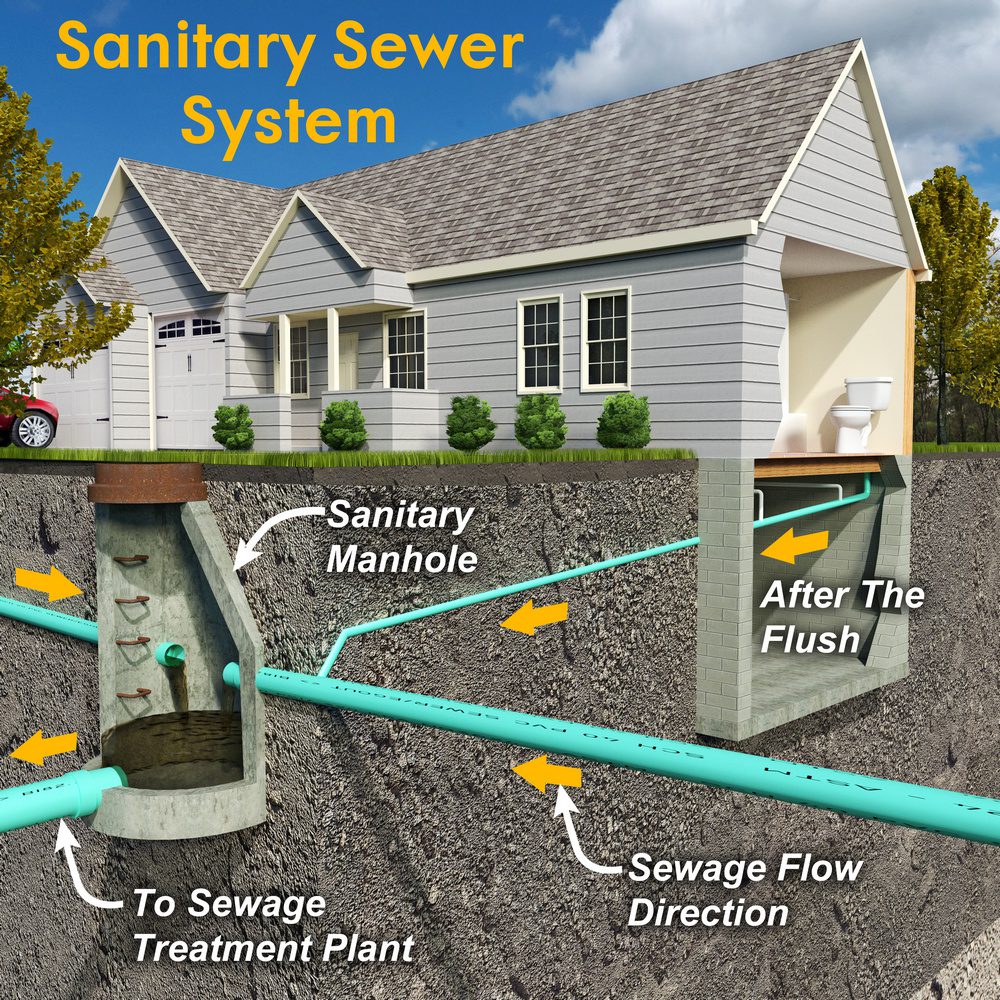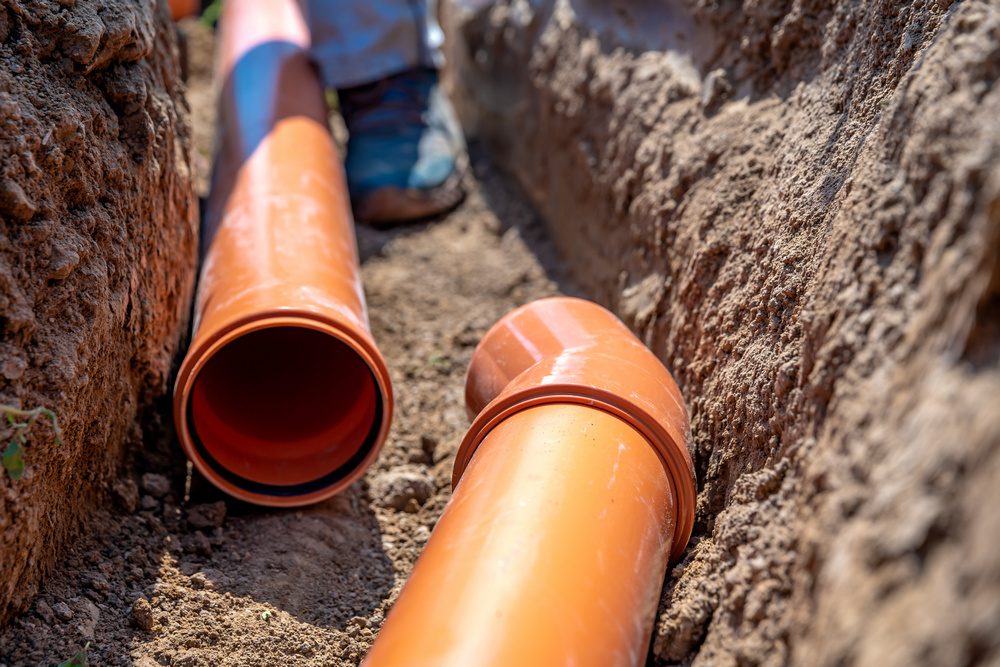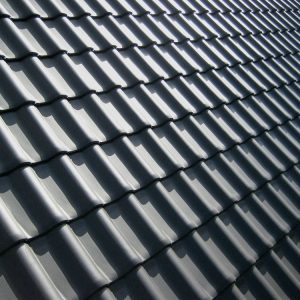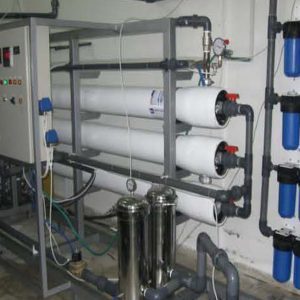
When building your dream home, there seems to be a million critical items on your checklist that you must consider, otherwise, the project won’t be entirely successful. One of these is underground drainage.
Before jumping in to purchase the necessary equipment and lay the pipes, you must have some background information on underground drainage systems. Read this basic guide for details:
Contents
- 1 Types Of Underground Drainage Systems
- 2 Common Equipment
- 3 Layout
- 4 DIY vs Professional Installation of Underground Drainage Systems
- 5 FAQs on Underground Drainage Systems
- 5.1 What are underground drainage systems?
- 5.2 Why is it important to have underground drainage systems?
- 5.3 Can I install any underground drainage systems myself?
- 5.4 What are the main types of underground drainage systems?
- 5.5 How do I choose the pipes for my underground drainage system?
- 5.6 How often should an underground drainage system be maintained?
- 5.7 What are common signs of problems in underground drainage systems?
- 5.8 Are underground drainage systems environmentally friendly?
- 5.9 How does a professional installation of an underground drainage system differ from DIY?
- 5.10 Can an underground drainage system increase property value?
Types Of Underground Drainage Systems
As outlined below, there are two types of drainage systems:
Surface Drainage
In underground drainage systems, surface drainage plays a crucial role. It’s designed to efficiently manage rainwater, protecting your home’s foundation and walls from water damage. This section delves into surface drainage’s key components and functionalities as part of an effective underground drainage system.
Essentials of Surface Drainage
Surface drainage is integral to any underground drainage system. It primarily directs rainwater away from your home’s foundation and walls. This process is vital to prevent water accumulation that can lead to dampness and structural damage.
Components of Surface Drainage
The surface drainage aspect of an underground drainage system typically includes a combination of gutters and downspouts. These elements work together to collect and channel rainwater. From here, the water flows into an underground network of pipes. These pipes are often perforated, allowing water to seep out gradually into a designated drain field, away from the house.
Incorporating French Drains
French drains are popular in underground drainage systems for effective surface water management. These drains consist of a trench filled with gravel or rock containing a perforated pipe. The design of a French drain allows for easy collection and redirection of surface water, efficiently integrating it into the broader underground drainage system.

Gray Water Drainage
Greywater drainage is a critical component of any comprehensive underground drainage system. It specifically deals with the management and disposal of wastewater from domestic sources, ensuring it’s safely transported away from residential areas.
Role of Grey Water Drainage
The primary function of greywater drainage within an underground drainage system is to handle the wastewater generated from bathrooms, toilets, and sinks. This system is designed to efficiently transport this waste to appropriate disposal areas, such as a septic tank or a drain field.
Managing Different Types of Wastewater
Within the greywater drainage, the system distinguishes between various types of domestic wastewater. Toilet waste, which is more contaminated, is usually directed to a septic tank. This is where heavier waste solids can settle and undergo decomposition.
On the other hand, the less contaminated water from showers, baths, and sinks typically flows to a drain field. Here, it can percolate through soil layers, undergoing natural filtration before rejoining groundwater systems.
Septic Tanks and Drain Fields
Septic tanks play a vital role in greywater drainage systems. They act as holding tanks where sewage is broken down before being released to a drain field. The drain field then allows the pre-treated wastewater to slowly soak into the ground, minimizing the risk of soil and water pollution.
Common Equipment
Here’s a list of the essential fittings you need for an underground drainage project:
- Sewer pipes: These form the bulk of underground drainage systems. You can choose between the 3- or 6-meter-long pipes, depending on the length of runs in your project. Since they come in a variety of diameters, you have to choose according to the desired capacity of the system.
- Land drain pipes: These are used for soakaway systems. As they’re perforated along their entire length, wastewater flowing in the pipe slowly seeps into the surrounding soil. You have the option to purchase either the 25m or 50m pipe for your underground drainage systems.
- Couplers: They act as joints between plain-end drain pipes. That’s why they have rubber seals on the interior periphery of the blown section.
- Bends: To change the flow direction, you can connect two straight pipes with a bend of any degree, say, 90, 45, or 30 degrees. These accessories also have a rubber seal inside the blow socket.
- Inspection chambers: You can choose between a brick-and-mortar or a plastic inspection chamber for your underground drainage systems. They allow you to rod pipes, allowing you to remove blockages. You’ll usually need one where the system changes direction or to connect pipes coming from the house to the main drainage pipe.
- Gully trap: This stores some amount of liquid in a U-shaped bend to prevent smells and gases within the drainage system from backing up into the house or pavement.
- Rest bends: They’re similar to the bends described above, only that they have firm support at the outer curve. You need them to connect vertical pipes coming from within the house to horizontal underground drain pipes. The support ensures the pressure of flowing water doesn’t break the connections.
You want to source these pipes and fittings from a reputable manufacturer with a solid record of producing high-quality goods for your underground drainage systems. The better the quality, the longer they’ll serve you without a need for repair or replacement.
Layout
For aesthetic purposes, you must design the layout of the pipes around the house for your underground drainage systems. You don’t want to have manholes sticking out of the ground haphazardly. Having one will make your compound look unattractive. Instead, make a point of positioning the manholes in a good-looking pattern that improves your home’s curb appeal, complete with classic manhole covers. For best results, you may want to work with a landscape architect.
Compliance With Building Codes
The local building council in your area of residence must approve your underground drainage systems. They do so to ensure that you don’t endanger human lives, which is possible if the system is shoddy.
Suppose you install 2-inch-diameter pipes to transport toilet waste to the septic. They’ll most likely block regularly. You’ll also encounter the same problem if you have sharp turns along with the system. If you dig a shallow trench for the pipes, human and vehicular traffic is likely to crush them to pieces. The building regulators ensure you don’t commit such costly mistakes. Your goal is to design and build a system that won’t get rejected.
Trenching
A general rule of thumb is to bury the pipes such that their top lies about 1 foot from the ground level. This prevents them from breakages by human and vehicular traffic. Additionally, it would help underlay the pipes with pea-shingle gravel to ensure they have proper support.
If you leave loose soil underneath, the pipes may ‘settle’ and affect the seamless flow of wastewater or even lead to leakages.
DIY vs Professional Installation of Underground Drainage Systems
Choosing between DIY and professional installation is a crucial decision when setting up an underground drainage system. This comparison aims to guide homeowners in making an informed choice that suits their needs and ensures the efficiency of their underground drainage system.
Assessing DIY Installation
Embarking on a DIY installation of an underground drainage system can be appealing for various reasons. This section expands on what it entails and the factors determining its suitability for homeowners.
Cost-Effectiveness and Personal Involvement
One of the primary draws of DIY installation of an underground drainage system is its potential for cost savings. Homeowners can reduce expenses related to labor and sometimes materials. Additionally, being directly involved in the installation process offers a sense of control and accomplishment, making it an attractive option for hands-on individuals.
Understanding Drainage Principles
A successful DIY installation requires a solid grasp of drainage principles. This includes knowledge about the types of pipes, gradients, and connections suitable for underground drainage systems. Homeowners need to understand how water flows and how to create efficient drainage paths. This knowledge is vital to prevent future issues like blockages or inadequate drainage.
Compliance with Local Building Codes
Adhering to local building codes is crucial in any underground drainage system installation. These codes ensure that the drainage is safe, efficient, and does not negatively impact the environment or the local infrastructure. DIY enthusiasts must familiarize themselves with these regulations to avoid legal complications and ensure their system is up to standard.
Physical Labor and Time Investment
DIY installation of an underground drainage system is labor-intensive. It involves digging trenches, laying pipes, and possibly dealing with challenging terrain or soil types. Homeowners need to be prepared for the physical demands and have the necessary tools for the job. Additionally, DIY projects can be time-consuming, so it’s important to consider the time investment required.
Recognizing Limits in Expertise and Equipment
While DIY installation can be rewarding, it’s important to recognize one’s limits. Not all underground drainage system installations are suitable for DIY due to their complexity or specific challenges.
Homeowners should assess whether they have the necessary skills, experience, and equipment to complete the project successfully. In cases where these elements are lacking, considering professional assistance is advisable.
Benefits of Professional Installation
Opting for professional installation when setting up an underground drainage system brings numerous benefits. This section provides a deeper insight into the advantages of having experts handle this critical task.
Expertise and Experience
Professionals in underground drainage system installation possess extensive knowledge and experience. They are well-versed in the latest techniques and best practices in the field. Their expertise ensures that the system is designed and installed correctly, reducing the risk of future problems like blockages or inefficiencies.
Access to Specialized Tools and Materials
Professional installers can access specialized tools and high-quality materials that might not be readily available to homeowners. These tools and materials are essential for creating a robust and effective underground drainage system. Their use can lead to better installation quality and longer system life.
Compliance with Legal and Safety Standards
Professionals know the legal requirements and safety standards related to underground drainage systems. They ensure the installation complies with all local building codes and environmental regulations. This compliance is crucial for legal reasons and to guarantee the safety and efficiency of the drainage system.
Handling Complex Layouts and Challenges
Underground drainage systems can vary in complexity, and sometimes unexpected challenges arise during installation. Professional installers are equipped to handle complex layouts and unforeseen issues. Their experience allows them to adapt and find effective solutions, ensuring the system’s reliability and functionality.
Long-term Reliability and Durability
A professionally installed underground drainage system tends to be more reliable and durable. Experts ensure that every aspect of the installation is performed with precision. This attention to detail means fewer maintenance issues in the long run and extends the lifespan of the drainage system.
Cost-Effectiveness in the Long Run
While professional installation can be more expensive initially, it is often cost-effective over time. A well-installed system requires less maintenance and is less likely to need costly repairs. Investing in professional installation can save money in the long run by avoiding issues arising from a less expertly installed system.
Evaluating Project Scope and Skills
Deciding between DIY and professional installation for an underground drainage system requires careful consideration of the project’s scope and the homeowner’s skills. This evaluation is crucial to ensure the drainage system is installed effectively and safely.
Assessing the Complexity of the Project
The complexity of the underground drainage system project is a key factor. Simple projects, like small-scale drainage for a garden, might be manageable for a DIY enthusiast with basic knowledge. However, larger projects involving intricate layouts, deep excavation, or connection to public sewage systems are typically more complex. These require a level of expertise and experience often found only with professionals.
Evaluating Personal Skills and Knowledge
Homeowners considering DIY installation must realistically assess their skills and knowledge. Essential skills include understanding drainage principles, proficiency in using tools, and knowledge of local building codes related to underground drainage systems. If these skills are lacking, it’s advisable to seek professional help.
Understanding the Demands of the Project
Each underground drainage system project has unique demands. This includes the type of soil, the landscape, the size of the area, and the specific drainage needs. Homeowners must understand these demands and evaluate whether they can meet them effectively through a DIY approach.
Recognizing Potential Risks and Safety Concerns
DIY installations of underground drainage systems come with certain risks. Mistakes can lead to ineffective drainage, property damage, or legal issues. Safety is another concern, as the installation process may involve heavy lifting, excavation, and working with complex materials. Homeowners must know these risks and decide if they can manage them.
Consulting with Professionals for Advice
Even if considering a DIY approach, it can be beneficial to consult with a professional. They can advise on the project’s feasibility, potential challenges, and safety precautions. This consultation can provide valuable insights, regardless of the final decision on the installation approach.
FAQs on Underground Drainage Systems
What are underground drainage systems?
An underground drainage system is a network of pipes and channels designed to direct excess water away from buildings and landscapes, preventing waterlogging and structural damage.
Why is it important to have underground drainage systems?
An underground drainage system prevents water accumulation around foundations and landscapes. It helps maintain structural integrity and prevents issues like mold, dampness, and erosion.
Can I install any underground drainage systems myself?
DIY installation of an underground drainage system is possible for simpler projects. However, it requires a good understanding of drainage principles and local building codes. For more complex systems, professional installation is recommended.
What are the main types of underground drainage systems?
The main types include surface drainage systems, which deal with rainwater runoff, and grey water drainage systems, which manage wastewater from household sources like sinks, showers, and toilets.
How do I choose the pipes for my underground drainage system?
The choice of pipes depends on the specific requirements of your underground drainage system. Factors to consider include the type of soil, the volume of water to be drained, and local building codes.
How often should an underground drainage system be maintained?
Regular maintenance is essential for the optimal functioning of underground drainage systems. Inspections should be done at least annually, with more frequent checks in areas prone to heavy rainfall or blockages.
What are common signs of problems in underground drainage systems?
Common signs include water pooling in your yard, damp or water-stained walls, unpleasant odors, and slow-draining sinks or showers.
Are underground drainage systems environmentally friendly?
Properly designed and maintained underground drainage systems are environmentally friendly. They prevent soil erosion and waterlogging and can be integrated with sustainable practices like rainwater harvesting.
How does a professional installation of an underground drainage system differ from DIY?
Professional installation typically involves expert planning, high-quality materials, and adherence to legal standards. DIY may be more cost-effective but can be challenging and time-consuming, especially for complex projects.
Can an underground drainage system increase property value?
Yes, a well-designed and properly functioning underground drainage system can increase property value by preventing water damage and maintaining the aesthetic appeal of the landscape.
Conclusion
Underground drainage systems require extra care during installation due to the toxic nature of the waste they convey. Therefore, you need to have some of the best practices at your fingertips before embarking on such a project. It’ll help you have a high-quality system that effectively drains away wastewater and rainwater from your house.








